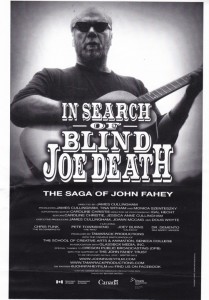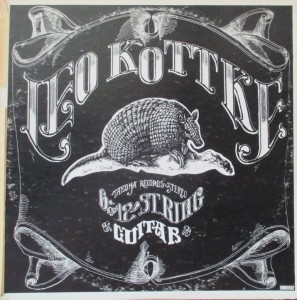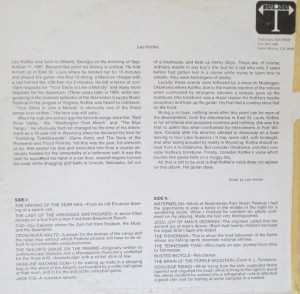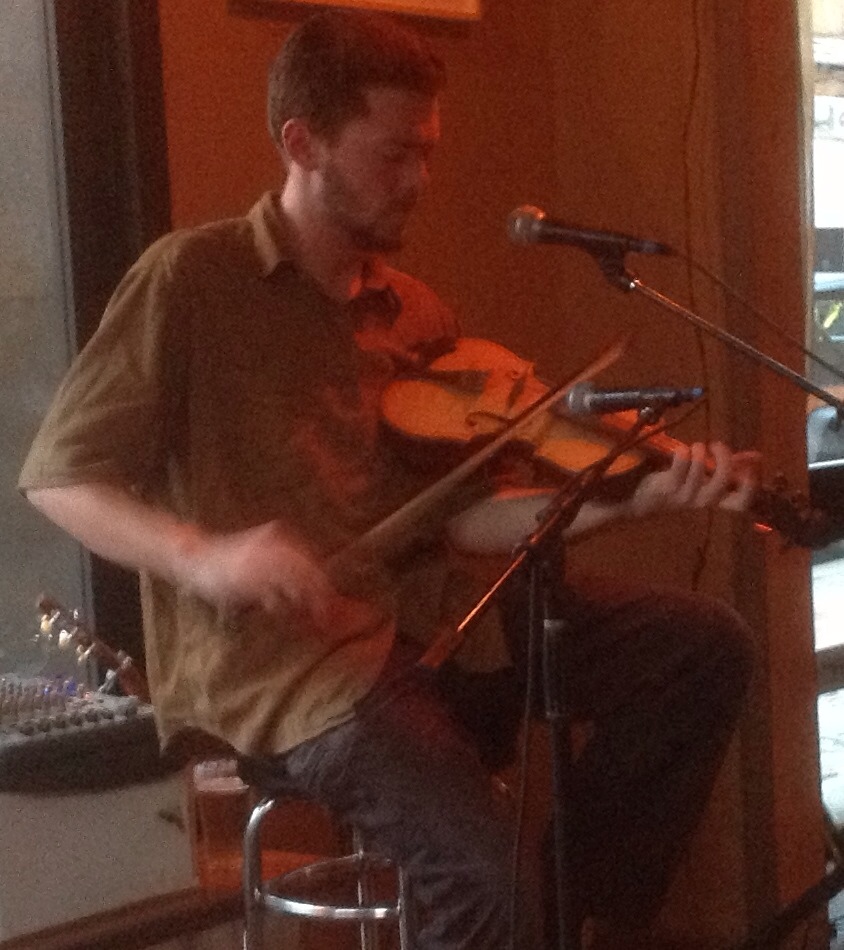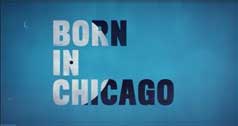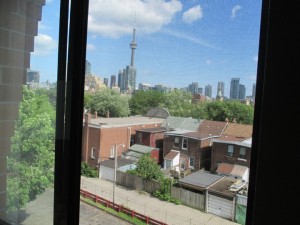Counting up the acts I heard and the venues I visited last week NXNE in Toronto I see that over the four days of live music, I heard thirty acts at sixteen different venues, including outdoor events in Trinity-Bellwoods Park; in-store shows; and nightclubs. Even so, there were at least a dozen or two more acts I really wanted to hear, but whose shows I just couldn’t get to. I’ll be making an effort to listen to their recorded music over the coming weeks and months, and before I’m done covering this year’s NXNE I’ll mention the bands I couldn’t get to hear. Much as I’d like to say I found time this year for a film or a comedy club, I limited my recreation to live music. Even at that, I missed lots of acts I would like to have heard. I hope one of these years to catch a documentary or some comedians. While still in Toronto I posted about Day I (Wednesday) and Day II (Thursday) and about the CBC Radio 3 picnic, on the Saturday afternoon. Now that I’m back in NYC, caught up on other work, and with all my pictures downloaded and cropped, I’ll write here about the the live shows I heard on the Friday of NXNE.
—-
The Urban Outfitters store on Queen Street West has a second level that is actually not a bad performance space. Late Friday afternoon I went to hear the duo Dusted, with exciting electric guitarist Brian Borcherdt, formerly of the band Holy Fuck. During NXNE 2011 I heard Borcherdt play solo, so it was nice to hear him working with a drummer, who also had a keyboard nearby. Dusted plays a raw, basic sound that was easy to like, and quite melodic. In Spin magazine, the single from their album “Total Dust,” got this praise: “'(Into The) Atmosphere,’ is ‘a dewy lo-fi pop ramble, with sweetly multi-tracked vocals, cavernous layers of melancholy guitar strums, and galloping, off-kilter percussion.’”
A party for the end of the CBC Beetle Road Trip was the next item on the Friday afternoon/early evening schedule, the culmination of the 7000KM drive taken in a Fender guitar-branded VW. CBC Radio 3 host Grant Lawrence helmed the drive, with CBC staffers Brian Cauley and Brent Hodge producing audio and video content for CBC Music. The caravan (they actually had two cars) stopped in different cities along the way and taped live sessions with more than a half-dozen Canadian indie groups. The arrival party was a blast, with The Darcys playing. They gave Grant a Blue Jays cap. I’m going to write about it separate from this post. Meantime, here’s a picture of Grant’s arrival:
From CBC HQs I walked north and east to the Cameron House on Queen St. West where ManitobaMusic.com was holding a showcase, with country singer Kayla Luky and her band up first. I had not heard her before, and was pleasantly taken with her clear voice, original songs, and her excellent lead guitarist, who looked like he just got down off a hot tractor, in overalls and sleeveless flannel shirt. 
I’m a big fan of Winnipeg band Imaginary Cities, and though I’ve seen them several times before, I made a point of catching their set this night at the Mod Club. This was a much larger venue than I’d ever heard them play before, and their power pop sound, with Marti Sarbit’s intensely likable voice, was well up to the task of filling the big space and capturing the interest and attention of a couple hundred listeners, many of whom it seemed hadn’t known this great band or their songs at all. Their second album, “The Fall of Romance,” has been about a month, and by now, I like all the songs from it as well as their great debut, “Temporary Resident.”
After leaving the Mod Club I remembered I hadn’t had dinner, so I stopped at a vendor’s stand on College Street, where a street festival was in full swing. I bought a pulled pork sandwich and munching away, walked down Ossington Street to the Dakota Tavern to hear Paul Langlois, a veteran member of one of Canada’s long-lived and most popular bands, The Tragically Hip. The Dakota is a great venue with a relaxed vibe where acoustic players and pickers are often showcased–on weekend mornings they even serve a bluegrass bunch. But the band Langlois assembled for this show–a high-revving 4-piece–was no stripped-down outfit, including as it did the Hip’s shredding lead guitarist Rob Baker. This was meant to be a showcase for Langois’ own material, and though I’d never heard these dark excursions in minor keys, my ear took right to them.
Another act soon took the stage at the Dakota, a band called Tin Star Orphans. I had time to listen to only two of their country rock songs, but I liked what I heard. 
I now had about twenty minutes to get to my next show with The Matinee, a great live band from Vancouver, British Columbia, who were scheduled to play a 1:00 AM show at the Supermarket, near my hotel in the Kensington Market neighborhood, where Shred Kelly had killed it the night before. I didn’t want to be late so took a cab down Dundas Street and walked the rest of the way up Augusta Street to the club. When I arrived I saw lots of friends from the CBC Radio 3 fan community. The Matinee had played on 2012’s Track on Tracks rock n’ roll extravaganza which traveled with ten bands and lots of fans from Vancouver to Toronto, a railroad excursion that made The Matinee fan favorites of many folks. I had heard and enjoyed them last year, but the set they played this night was leaps beyond anything I’d heard from them before. The songs on their one album, “We Swore We’d See the Sunrise,” are bright and country-tinged with sweet harmonies (listen to “Sweetwater” for latter-day Everly Brothers harmonies). They also blessed to have as their lead guitarist Matt Rose, a true guitar god sort of player. He’s tall and athletic in his movements, with long arms and legs, long black hair, and just a stunning riff-ripper. He clearly relished and fed richly off of the audience’s boisterous enjoyment of his cutting lines. During their encore he jumped down from the stage in to the audience, playing right among us. At the end, he heaved his acoustic back on the stage as a kind of declamation of satisfaction, not worrying about the instrument. Here are a couple pictures from The Matinee’s great show, one of the very best shows of my NXNE. In the first pic, that’s Matt Rose on the right, playing a Fender Telecaster and moving so quickly I couldn’t capture him in focus, flanked by lead singer Matt Layzell. The second picture shows Matt Rose and bandmate Geoff Petrie amid the crowd during that wild encore.


Before going to bed that night I tweeted this:
After I got back to NYC from Toronto, CBC Radio 3 Fan of the Year Christine McAvoy, a professional photographer, shared many of her NXNE pictures, including this one (on the right). In it I am surrounded by R3 friends, listening to The Matinee at a quieter moment of their show, holding my IPad, and tweeting about it in real time. Since I started writing this blog it’s the first “action shot” of me, so to speak, at work. I thank Christine for quickly giving permission for me use it here.
 To return the favor, the next photo (on the left) shows Christine (holding her camera high, in straw hat) at The Matinee show during the encore.
To return the favor, the next photo (on the left) shows Christine (holding her camera high, in straw hat) at The Matinee show during the encore. 
My friends were moving on to a 2:00 AM show with We Are the City, but I declined to join them, feeling satisfied to end the night with The Matinee’s show. I headed back to my room so I could get some sleep before a Saturday morning breakfast with book business friends Michael Martin and Margot Stokreef.






